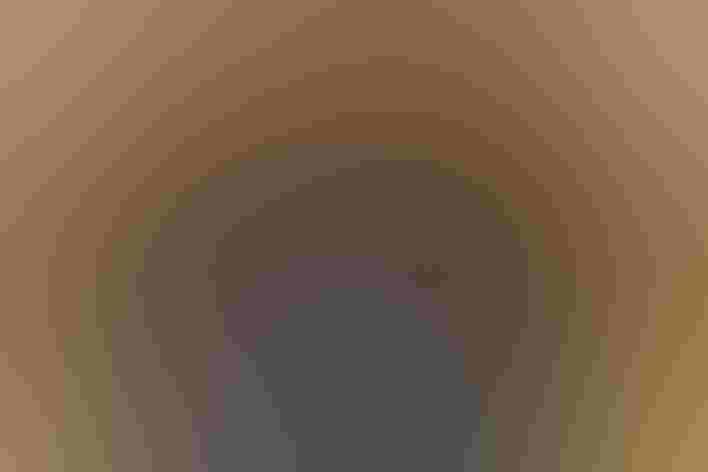Wild Turkey
At a Glance
Benjamin Franklin would have preferred to have the Wild Turkey, not the Bald Eagle, chosen as the national symbol of the United States. Wary and magnificent, Wild Turkeys usually get around by walking or running, but they can fly strongly, and they typically roost overnight in tall trees. Turkeys were formerly considered to belong to a separate family from other chicken-like birds; there are only two species, ours in North America and the Ocellated Turkey in Central America.
All bird guide text and rangemaps adapted from Lives of North American Birds by Kenn Kaufman© 1996, used by permission of Houghton Mifflin Harcourt Publishing Company. All rights reserved.
Category
Pheasants and Grouse, Upland Ground Birds
IUCN Status
Least Concern
Habitat
Fields, Meadows, and Grasslands, Forests and Woodlands, Freshwater Wetlands, Shrublands, Savannas, and Thickets
Region
California, Eastern Canada, Florida, Great Lakes, Mid Atlantic, New England, Northwest, Plains, Rocky Mountains, Southeast, Southwest, Texas, Western Canada
Behavior
Direct Flight, Rapid Wingbeats, Running
Population
6.900.000
Range & Identification
Migration & Range Maps
Not migratory, but may wander at some seasons, especially in fall.
Description
Both sexes; males are larger. Length: 3 ft 7 in–3 ft 9 in (1.1–1.2 m); wingspan: 4 ft 1 in–4 ft 8 in (1.3–1.4 m); weight: 5 lb 8 oz–23 lb 13 oz (2.5–10.8 kg). The Wild Turkey is huge, with a naked head and a long, wide tail. Looks trimmer and stronger than the barnyard variety. Females and young are smaller and duller than adult males.
Size
About the size of a Heron
Color
Black, Brown, Green, Red, White
Wing Shape
Broad, Fingered, Rounded, Short
Tail Shape
Long, Rounded, Square-tipped
Songs and Calls
Gobbling calls similar to those of domestic turkey.
Call Pattern
Falling, Flat
Call Type
Odd, Rattle, Scream
Habitat
Woods, mountain forests, wooded swamps. Habitat preferences of the Wild Turkey vary across the continent, including oak-hickory forests, pine-oak forests, cypress swamps, arid mesquite grasslands, pinyon-juniper woodlands, and chaparral. Usually found near some kind of oak (acorns are a favorite food). The best habitat includes a mixture of woodland and open clearings.
Sign up for Audubon's newsletter to learn more about birds like the Wild Turkey
Behavior
Eggs
Usually 10-15, sometimes 4-18, rarely more. White to pale buff, dotted with reddish brown. Sometimes more than one female will lay eggs in one nest. Incubation is by female only, 25-31 days.
Young
Downy young leave nest soon after hatching. Female tends young, and broods them at night for several weeks; young feed themselves. Young can make short flights at age of 1-2 weeks, but not full-grown for several months.
Feeding Behavior
Forages mostly by walking on the ground. The Wild Turkey often scratches in leaf litter to expose food items. Sometimes climbs in shrubs or trees to eat berries. May forage most actively in early morning and evening.
Diet
Omnivorous. The diet of the Wild Turkey varies with season but is mostly plant material, including many acorns, leaves, seeds, grains, berries, buds, grass blades, roots, and bulbs. Also eats insects, spiders, and snails. Sometimes eats frogs, lizards, snakes, salamanders, and crabs.
Nesting
In spring, male Wild Turkeys give a gobbling call to attract females. In courtship, males puff out their feathers, raise and spread their tails, swell their facial wattles, and droop their wings; in this exaggerated posture, they strut, rattling their wing feathers and making humming sounds. One male will mate with several females. Nest site is on the ground, often at the base of a tree, under a shrub, or in tall grass. Nest is a shallow depression, sparsely lined with grass and leaves.
Conservation
Conservation Status
Numbers of the Wild Turkey were seriously depleted by the beginning of the 20th century, but have been reintroduced to most of their former range and established in new areas. Still increasing in many regions, and is now adapting to the edges of suburban habitats in many eastern states.
Climate Threats Facing the Wild Turkey
Choose a temperature scenario below to see which threats will affect this species as warming increases. The same climate change-driven threats that put birds at risk will affect other wildlife and people, too.











